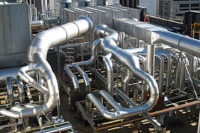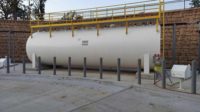An essential element of the hospital environment has been to design and maintain effective infection control for staff, patients, and visitors alike. Perhaps nowhere is it more important to provide the safest possible environment than hospitals where many populations converge with all manner of ailments that leave people either contagious or vulnerable.
According to the World Health Organization, “Hundreds of millions of patients are affected by health care-associated infections worldwide each year, leading to significant mortality and financial losses for health systems.”
In face, according to the WHO, in developed nations, patients at seven out of every 100 hospitals at any given time will acquire a healthcare-associated infection. In developing countries, that number is 10.
Eliminating the spread of opportunistic infections is paramount. The emergence of super-bugs and antibiotic-resistant pathogens over the last two decades has increased the pressure on health care providers — to say nothing of COVID-19, which has made the proper application of practices even more crucial. The coronavirus pandemic, in particular, has brought a renewed focus on an often overlooked aspect of sanitization: IAQ.

Proactive Infection Control
Infection control practices cover many different areas within a health care facility and, according to the WHO, include standard practices (hand-washing, antiseptics, personal protective clothing, etc.), Additional transmission-based precautions (airborne precautions, droplet precautions and contact precautions), and environmental management practices (air, water, cleaning of the hospital environment, and waste management). Air management is a crucial aspect of transmission-based precautions but is often underrated and under-managed. This is changing.
There are several known methodologies and technologies that, when layered on top of each other, can have major, measurable positive effects on improving conditions and outcomes of a stay in health care facilities. Air filters are a ubiquitous technology but, used alone, requires air to be pulled out and recirculated and does little to affect surfaces. This is why a growing number of hospitals and health facilities are turning to more active indoor air purification via bi-polar ionization.
One such recent facility is Englewood Health in Englewood, New Jersey. Looking for an added level of protection to keep patients, staff, and visitors safe, they engaged AtmosAir Solutions, a global indoor air purification technology firm based in nearby Fairfield, Connecticut.
“A holistic indoor air quality approach is the best way to keep our facilities as safe as possible,” said Harvey Weber, vice president of facilities management at Englewood Health.
Back to Nature
Bi-polar ionization is inspired by a natural process that occurs where the air is pure. People instinctively feel that sea air or mountain air is cleaner and fresher than the air in our cities or indoor environments at work or home. That difference can have a significant impact on health and wellbeing.
In a pollution-free environment, that freshness in the air is the result of naturally occurring ions that break or weigh down mold, spores, volatile organic compounds, bacteria, and viruses, among other particles, in the air, and on surfaces. These ions become less prevalent in populated areas where they are depleted by higher levels of pollution.
Bi-polar ionization counters this by saturating indoor spaces with these ions, which bind to viruses and bacteria, causing a chemical process that renders them harmless, even if breathed or swallowed. Additionally, the ions attach to particulates and expand them, making them heavier and more easily removed via filters or cleaning.
Recent lab tests simulating real-world conditions by Microchem, a lab that tests EPA- and FDA- approved products, show AtmosAir bi-polar ionization neutralizing more than 99.9% of Human Coronavirus 229E within a half hour of use. A 2015 study in Scientifc Reports notes, “The device enables unique possibilities for rapid and simple removal of virus from air and offers possibilities to simultaneously identify and prevent airborne transmission of viruses.”
“In a hospital, where there is a great deal of people moving in and out of spaces, this additional layer of protection directly in the air people breathe can be crucial,” said Weber.
Minimal Interruptions, Maximum Efficiency
“Another important factor for us was the simplicity of the installation and the straightforward, durability of the units,” said Weber.
AtmosAir’s bi-polar ionization units are installed in existing HVAC ducts and are distributed as part of the normal operation of a hospital’s air systems. Unlike other air purification solutions, the units only need to be maintained every two years and complete installation takes approximately one hour, so disruptions are minimal.
When combined with AtmosAir IAQ monitoring smart devices, which measure air purity continuously and can work with automated HVAC management systems to adjust airflow as needed, the units can actually create greater energy efficiency.
The reality is that hospitals are some of the most vulnerable indoor spaces for the transmission of pathogens. Even in a vigilant facility that meets and exceeds all codes, occupants can be exposed to a range of airborne contaminants. The various health implications associated with poor IAQ – from respiratory problems to hospital-acquired infections to irritants – have been the subject of research for a long time and are well established. But, as the health care industry better understands the impacts, it’s clear that proactive layers of protection as part of a comprehensive IAQ strategy are crucial — and AtmosAir bipolar ionization is the effective solution verified by science and supported by professionals on the ground every day.




